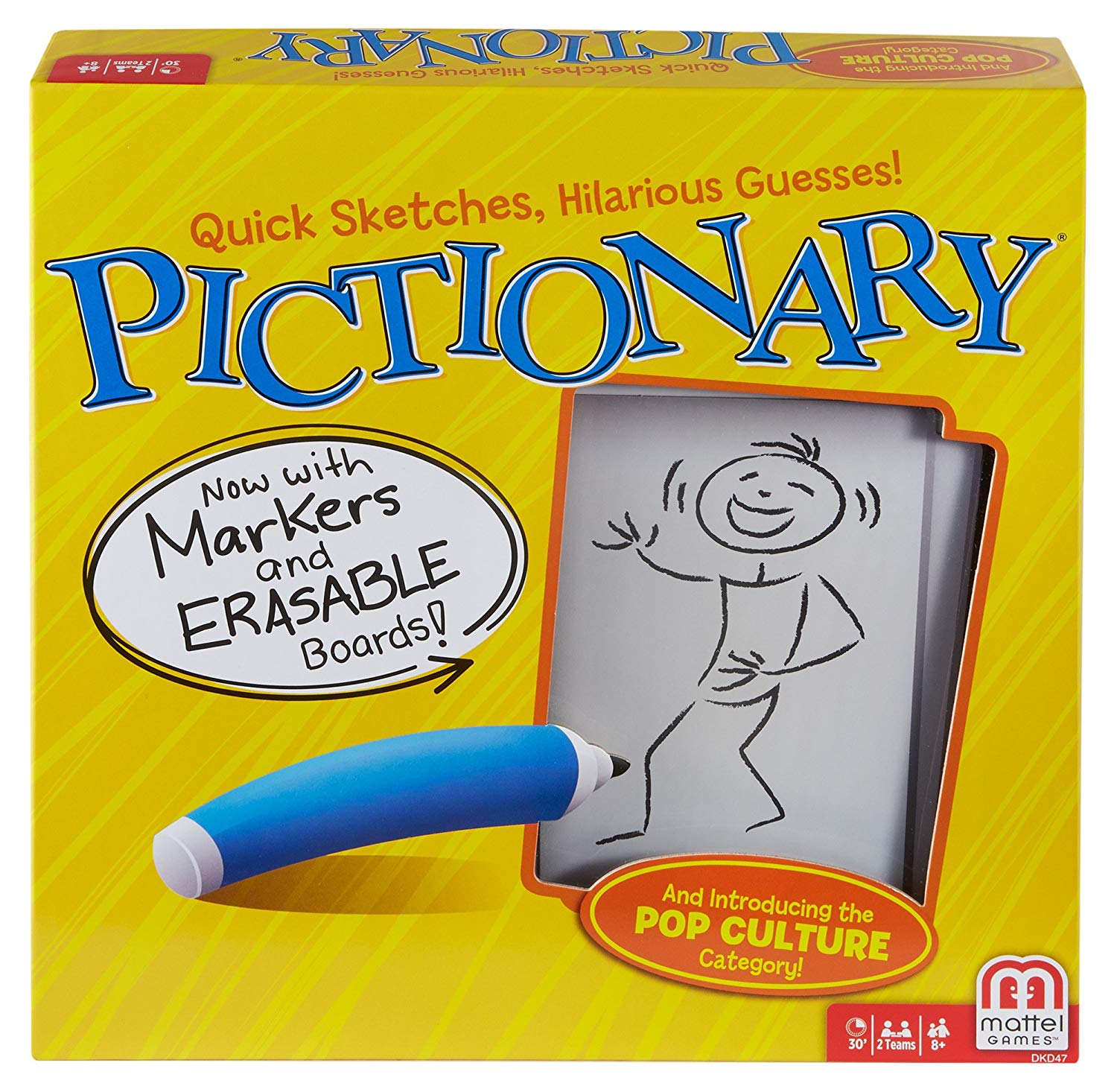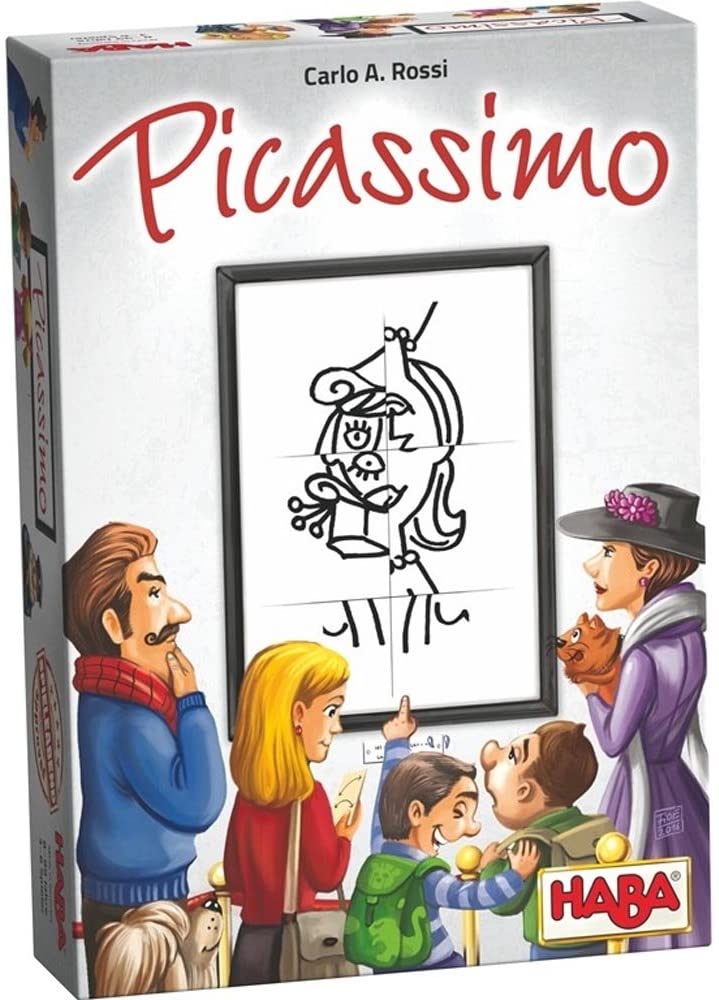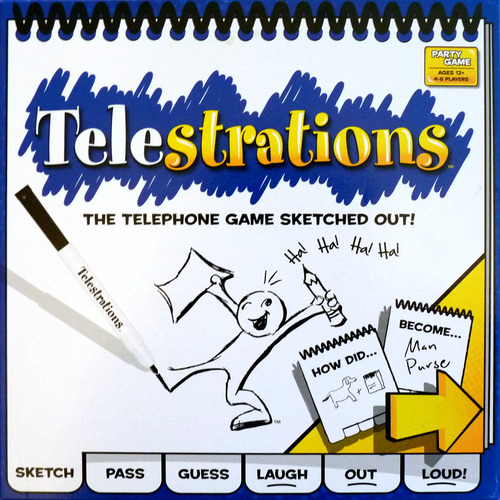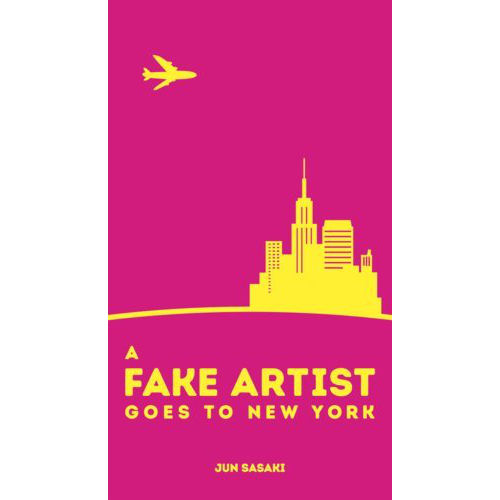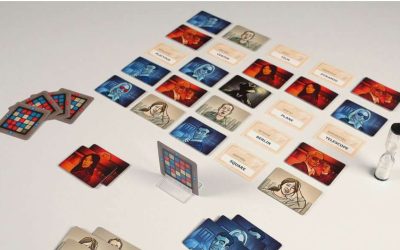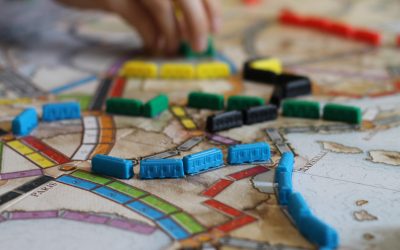Drawing Games
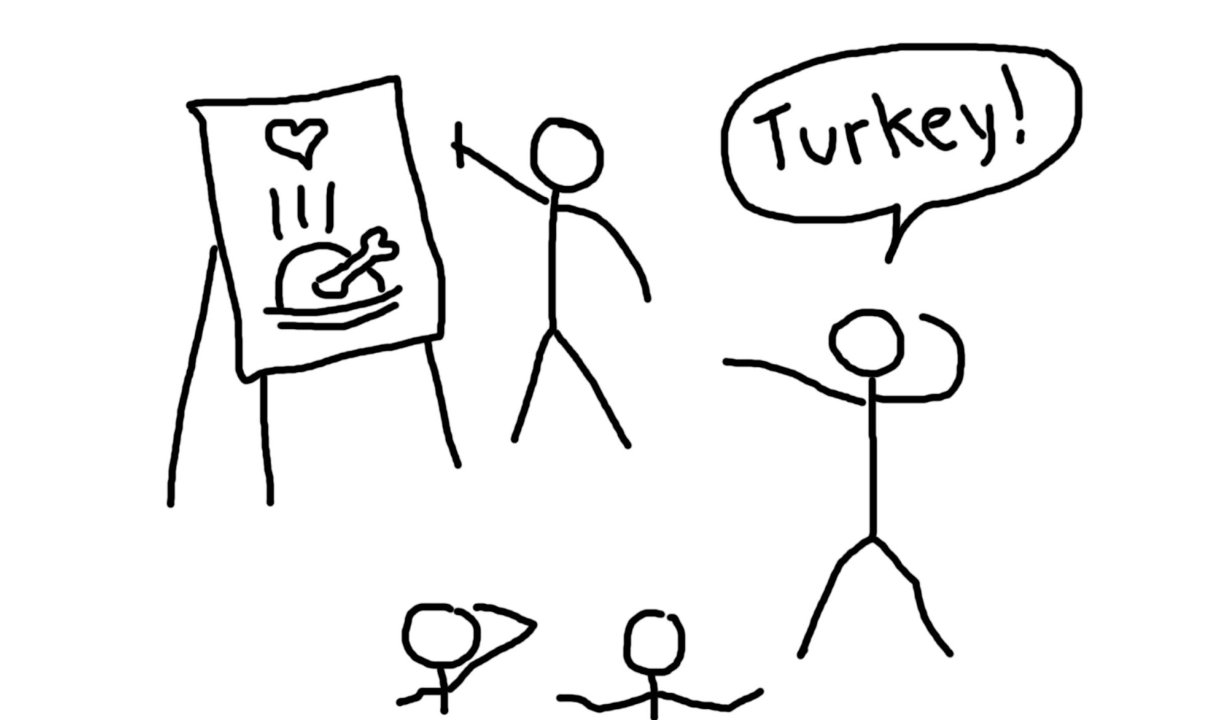
Pablo Picasso once said that “Every child is an artist…
The problem is how to remain an artist once we grow up.” Well put, indeed. If we could only harvest the enthusiasm and not-caring attitude of a child who just wants to draw something simply to express themselves. Not to impress or get approval but just to say: “Look what I saw or what I did today!” In the end, isn’t that what creativity should be about? To put one’s thoughts or visions onto paper (or other mediums of expression). To translate something like a non-tangible thought into something sharable and open. After all, art is subjective in the eye of the beholder, but the intention of art will at least be there. One could even conclude that there is no such thing as ‘good art’ or ‘bad art.’ And if there is, who cares as long as one had fun creating it? We just have to give it a shot.
There are plenty of board game titles that encourage us to bring out our inner child-like artist. A gaming session amoungst friends or family can be the perfect setting to silence our internal critic and to give way to unbridled expression without the fear of rejection. So let us explore some of the games that encourage us to express ourselves through drawing.
One of the most know games of this genre is Pictionary. The game was first created by Robert Angel and his friends in 1981. Angel was inspired by the gameplay of both, Trivial Pursuit and Charades, and believed that a similar structure could be applied to a game about drawing. Angel and his business partners first published Pictionary in 1985 and managed to sell 6,000 copies within one year. In 1994 Hasbro took over the publishing and the rights to the game were eventually sold to Mattel in 2001. By that time sales worldwide exceeded more than 32 Million copies.
The concept of Pictionary is rather simple: The game is played in teams. The active team chooses one person to do the drawing (that role rotates throughout the game). The drawer chooses a card and tries to draw pictures on a sheet of paper, which hint to the word printed on their card. It is not allowed to use numbers or letters, or to use verbal forms of expression. Their teammates try to guess the word on the card. If they are successful, their pawn moves forward on the common game board towards the finish line. There are five different types of squares on the board, each representing a different category that the drawer much choose from. The goal is to be the first team to reach the last space on the board.
In the end, on could condense Pictionary down to this: It is a party game about communicating in a way other than speaking or acting. A player has to analyse and break down a subject and convey it while racing against a clock.
Pretty much all drawing or doodling games are based on some variant of that idea. The beauty of them lies in the fact that one does not get judged solely on how well one can draw. Success lies in the interpretation and guessing of the word and the imagination of the drawer as well as that of their team. It simply doesn’t matter if you are the next Picasso or just a simple stick-figure artist – your chances of winning might be the same. “What matters,” Angel himself said, “is how you draw it, how you visualize it.” The key is to be willing to engage with others – openly and with intention.
If you trying to get away from yet another night of watching television or browsing social media in a zombie-like fashion, I encourage you to give a drawing game a try. Not only will you get a chance to showcase your drawing skills (or maybe the lack thereof), but you will certainly get entertaining time amongst your family and friends. Drawing games can provide fun for everyone –You never know, maybe you’ll even discover that you still have that youthful, creative mind living inside you.
If you are looking for some new games to ‘draw you in’, then here are some of my top suggestions:
3-16 players, ages 12 and up
Akin to charades, but with drawing on paper instead of acting out the answers. No great drawing talent is required; instead, players gain an edge if they have a good imagination when guessing, empathy for their teammates, and/or a general ability to communicate in restricted circumstances.
3-6 players, ages 8 and up
Everyone is an artist! But wait a minute! Is that supposed to be a goblin? Or rather a chicken? The player who can draw well and also keep one step ahead by guessing correctly, collects the most points and wins the game!
Each player secretly chooses a term from their card and draws it on their erasable drawing board. All the players draw at the same time. Then a transformation card is turned up. It will show which sections of each artwork are to be exchanged. Who can recognize what the other players have drawn?
4-8 players, ages 12 and up
Each player simultaneously begins by sketching a word dictated their card. Time’s up! All players, all at the same time, pass their sketch to the next player, who must guess what’s been drawn. Players then simultaneously pass their guess — which hopefully matches the original word (or does it??) — to the next player who must try to draw the word they see — and so on.” No matter what there will be laughter and silliness once the original words are revealed.
4-7 players, ages 14 and up
Players take the role of a visionary start-up founder, who is tasked with creating a product so exciting, so strange and unique… that will have investors and customers jumping on board. Each player receives two “Logo Component” cards (e.g. “Fireworks” and “A super happy fish”), and draws a Logo that combines them (e.g. a smiling fish with fireworks bursting out of its fins). Players then pass their logos in a circle, and one by one, other players add a Company Name, Slogan, and online Review inspired by the original Logo. Everyone votes on which company they like best, and that player gets a million dollars to launch their business!
5-10 players, ages 8 and up
Players take turns being the Question Master, whose role is to set a category, write a word within that category on dry erase cards, and hand those out to other players as artists. At the same time, one player will have only an “X” written on his card. They are the fake artist!
Players will then go around the table twice, drawing one contiguous stroke each on a paper to draw the word established by the Question Master, then guess who the fake artist is. If the fake artist is not caught, both the fake artist and the Question Master earn points; if the fake artist is caught and cannot guess what the word is, the artists earn points.
Are you intrigued to try a new 2-player game? Here are my top suggestions:
‘Spiel Des Jahres’ Winners 2021
Arguably the most important event with regards to the world of board gaming is ‘Das Spiel,’...a fair that is held each October in the German city of Essen. Exhibitors and guests from all around the world gather for 4 days to present and try all of the new and exciting...
Word Guessing Games
The philosopher Friedrich Nietzsche once said:...“All I need is a sheet of paper and something to write with, and then I can turn the world upside down.” Even though I am almost certain that he did not say this with regards to board games, part of me wonders and...
The History of ‘Ticket to Ride’
What defines a great board game?...It is its theme, the accessibility and elegance of the rules, the design and production of the components, the depth of strategy, or the level of enjoyment one experiences when playing it? I believe it is a combination of all of...
